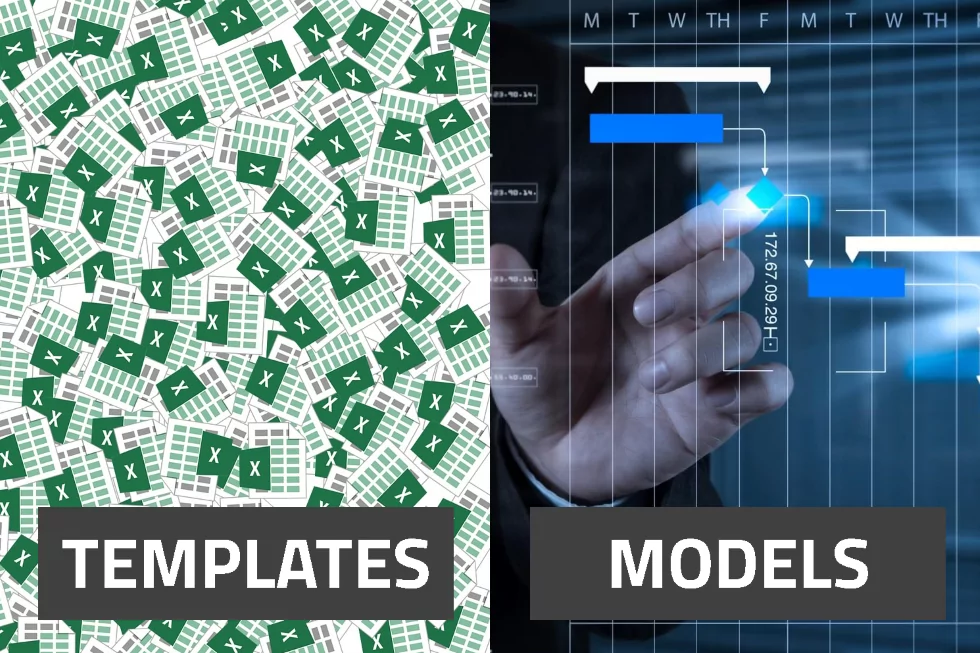
You may be looking to download a project budget template in Excel to get started with your project budgeting process. Or, you may be looking for examples of project budgets to help setup a template for your next project. Many project businesses use templates to set up project schedules and estimates. However, there is a better way, and that is what this article is about.
A Project Budget Templates is a detailed planning tool that uses a past project or a pre-configured framework to estimate a new project’s revenues, expenses and profit. Templates are used in project-based companies to try and standardize the project inception process and decrease the amount of time and effort required to produce a project plan and estimated budget.
With project budget templates, you can capture and reuse the structure and content of past projects, including the tasks and to some degree the budgeted costs. By copying old projects, templates can help you save time in the creation of new projects.
Although a budget template can provide an overall structure for your project, it still requires many manual revisions to meet the specifications of the new project. This includes adding, removing, or editing each task and the associated budgets as well as changing the duration, materials, resource pools, and more.
In addition, most planning tools that provide project templates do not extend to estimating cost or creating budgets according to your accounting methods. Therefore, it takes more time to build the cost breakdown structure in a spreadsheet or different application. This manual process is prone to error which creates problems downstream for the project.
Project Modeling is a new technique that revolutionizes how you build projects. It allows you to develop more accurate plans in less time, accelerate the sales process, and ultimately drive better outcomes for your customers. It automates the process of parametric estimating for your projects.
Similar to a product configurator for manufacturing, a project modeler builds the components (i.e. the tasks and costs) of a project from a predefined set of models. Project Modeling creates a streamlined planning and estimating process that enables project-based companies to scale and automate best practices from project sales through execution.
Project Modeling makes the project budget template dynamic. The specific quantities, types, and other specifications of a project template become variable inputs that a user can update as a part of the project budgeting process. As a result, there are very few, if any changes required after the model generates the new project.
Unlike project templates, Project Models offer an increased measure of process budgeting control. It’s quite easy for a user to make a mistake that goes unnoticed with a template. Project Models, however, require the user to specify every single variable before the project is created. Consequently, Project Modeling creates a repeatable process for building projects and their associated budgets with best practices in mind every time with fewer errors.
In essence, the Project Model generates a full project plan with cost and price estimates that the user and company can trust.
Download the Project Modeling Whitepaper to learn how to create a streamlined and controlled planning and estimating process for your company.
The fact of the matter is you don’t want the outcome of your project to be reliant on how the project manager’s or estimator’s last project relates to the new one. This approach means the project is dependent on individual diligence and talent.
Project Modeling makes the whole project planning process streamlined and scalable. Not only are you able to build a unique plan and budget based on uniform components, but any new guidelines or revised best practices are easily adopted and shared through a central model library.
Problems in projects usually start in the planning phase. In a nutshell, Project Modeling is a highly flexible, yet structured approach to building individual projects that will help you deliver more projects on time and on budget.
Learn more about Adeaca’s Project Modeler and how you can setup every project for success right from the start.
In today’s increasingly complex project environments, businesses are facing unprecedented challenges in delivering projects on time, within budget, and according…
Project Business Transformation reduces risk, increases efficiency, and enhances decision-making in your project organization. Project Business Automation is a new…
Project Business Transformation is a strategic digital transformation initiative designed to fundamentally change how projects are managed and delivered in…
There is so much hype around the use of AI in project management. What is the reality? Join Chief Category…
In the dynamic landscape of project-driven enterprises, risk is omnipresent. As projects become integral components of your business strategy, the…
Management by exception is a method of business management that focuses on identifying and managing cases that deviate from the…
This website uses cookies.